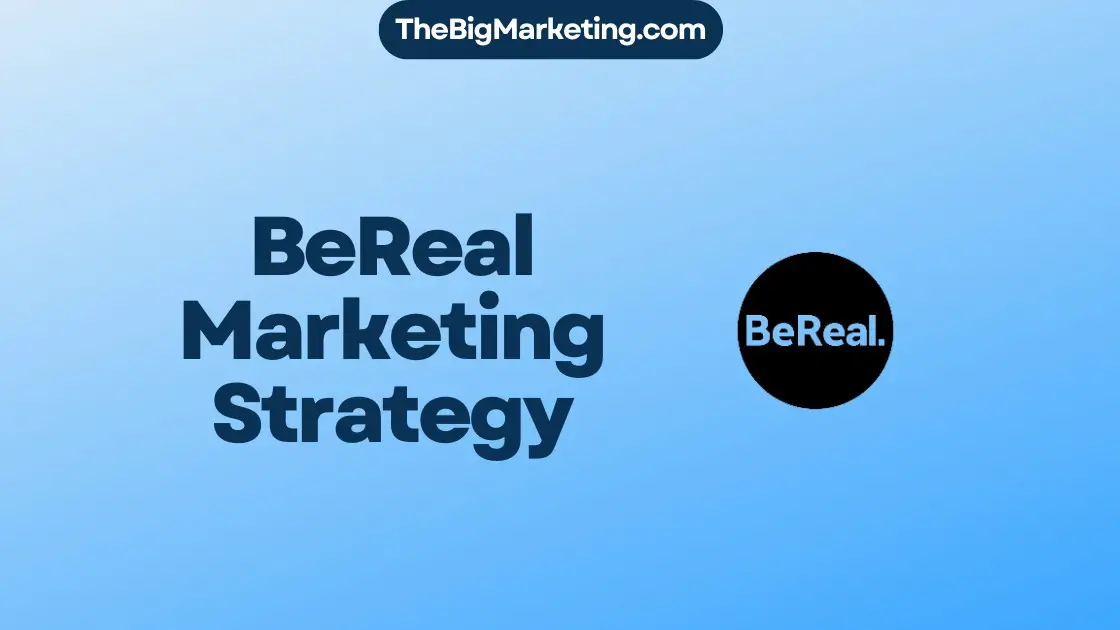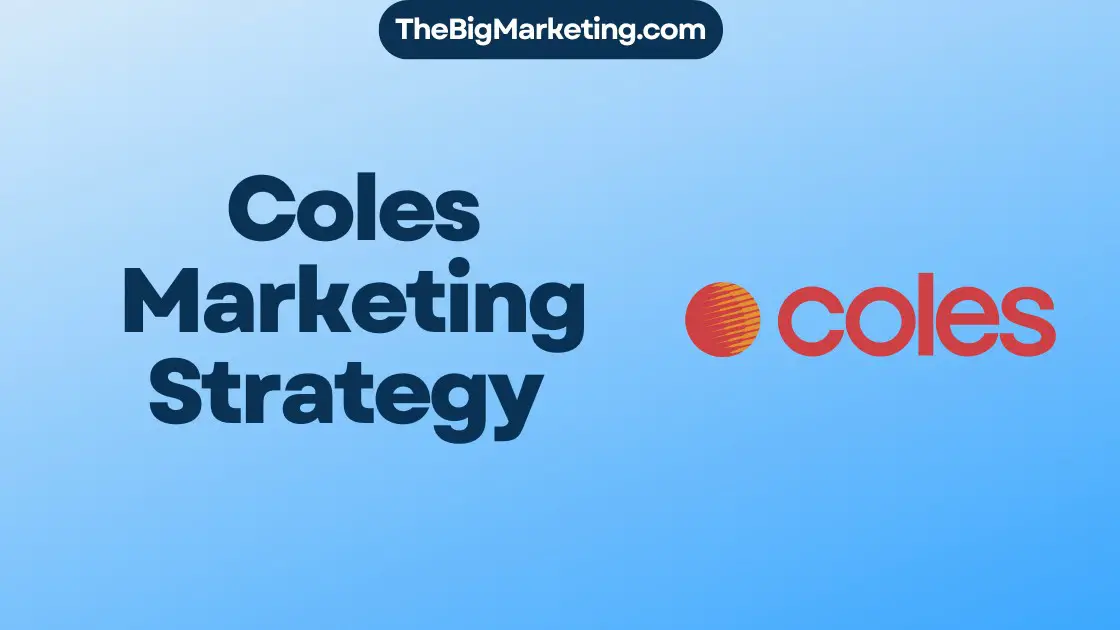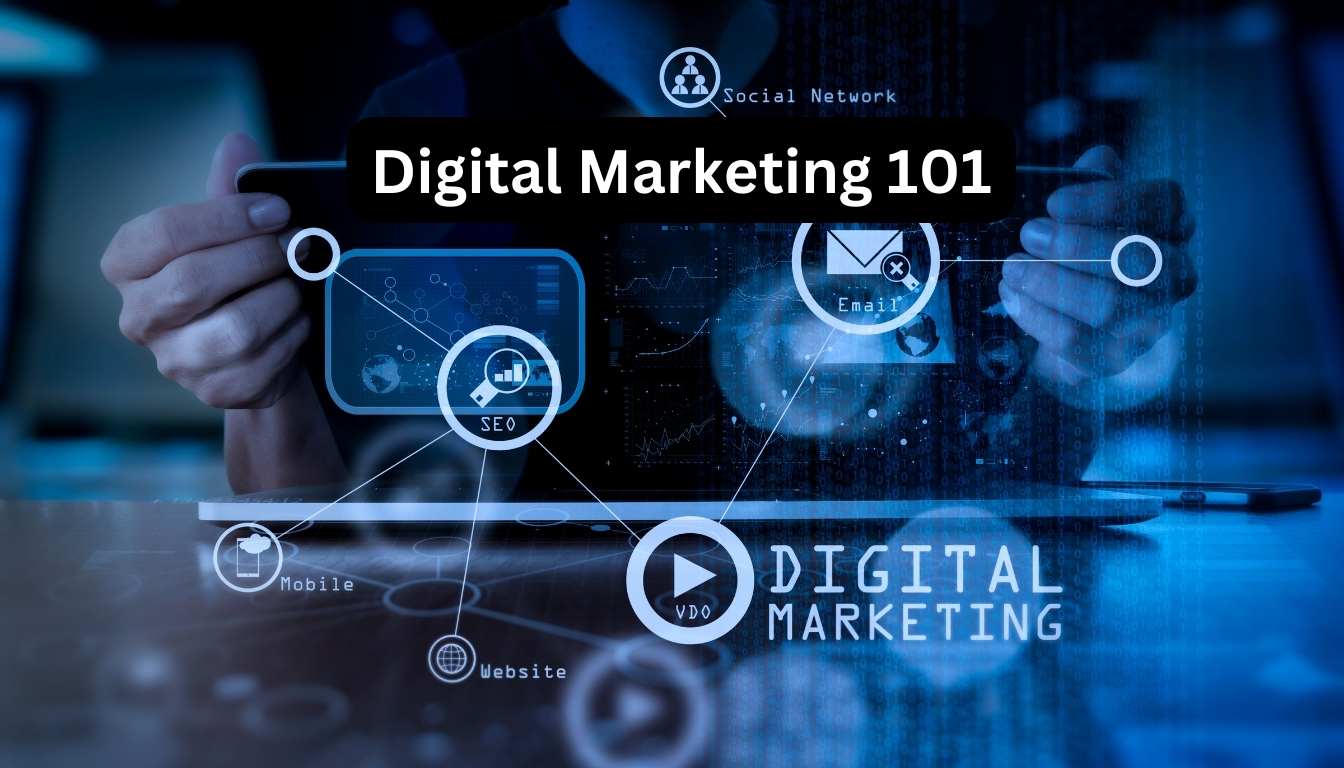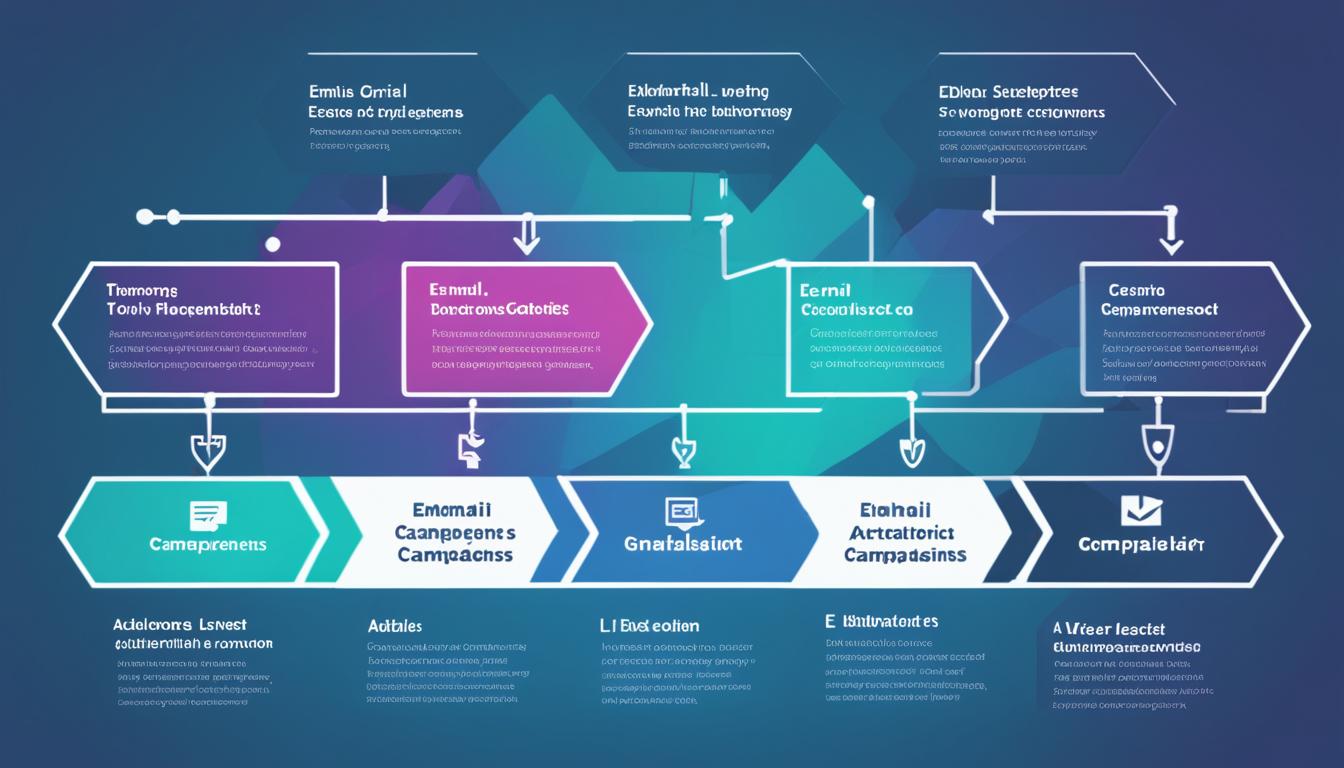In today’s competitive market, a well-defined marketing strategy is crucial for businesses to stand out and achieve their goals. In this case study, we will examine RONA’s marketing strategy for 2024 and explore the key elements that make it successful.
Creating an effective marketing plan starts with setting clear goals. RONA must determine whether their focus is on increasing web traffic, expanding their social media presence, or both. By identifying their primary objectives, RONA can develop a strategy that aligns with their brand’s priorities and target audience.
A TOFU/MOFU/BOFU (Top of the Funnel, Middle of the Funnel, Bottom of the Funnel) strategy is essential for targeting audiences at different stages of the buyer’s journey. RONA should craft engaging ad copy and conduct thorough keyword research to optimize their search engine rankings and attract the right audience.
Before implementing any marketing tactics, RONA needs to conduct a market analysis and customer segmentation. Understanding market trends, identifying competitors, and analyzing customer preferences are crucial steps in tailoring marketing campaigns to target specific customer segments effectively.
Another key aspect of RONA’s marketing strategy is a thorough competitive analysis. By studying their competitors’ strengths and weaknesses, RONA can learn valuable insights and differentiate their own marketing efforts to gain a competitive edge.
Digital marketing plays a significant role in today’s landscape, and RONA should leverage various tactics to boost their online presence. This includes search engine optimization (SEO), social media marketing, content marketing, email marketing, and influencer collaborations. Each tactic should be carefully tailored to reach RONA’s target audience and achieve their marketing goals.
A strong branding strategy is crucial for RONA to differentiate itself in the market. Developing a unique brand identity, crafting a compelling brand story, and consistently communicating brand values across all marketing channels are key elements of a successful branding strategy.
ROI measurement is vital to ensure the effectiveness of RONA’s marketing efforts. By tracking key performance indicators (KPIs) such as website traffic, conversion rate, customer acquisition cost, and customer lifetime value, RONA can determine which marketing tactics generate the highest return on investment.
Choosing the right paid advertising platforms is essential for RONA to reach their target audience effectively. Platforms such as Google Ads, Meta Ads, TikTok Ads, LinkedIn Ads, Microsoft Ads, and Pinterest Ads should be carefully selected based on the target demographic and online behavior of RONA’s audience.
Conversion optimization is crucial for maximizing the effectiveness of RONA’s paid advertising campaigns. By creating conversion-friendly landing pages with clear calls-to-action, user-friendly navigation, persuasive copywriting, and responsive design, RONA can improve their conversion rates and drive more valuable leads.
Continuous testing and optimization are key to keep RONA’s marketing strategy up-to-date and effective. Regularly conducting A/B tests and experiments allows RONA to make data-driven decisions and optimize their marketing tactics for better results.
In conclusion, RONA’s marketing strategy for 2024 should be based on clear goals, market analysis, customer segmentation, competitive analysis, and a strong branding strategy. By leveraging digital marketing tactics, measuring ROI, and continuously testing and optimizing their campaigns, RONA can create an effective marketing plan and successfully promote their brand in the competitive market.
Key Takeaways:
- Set clear goals to focus your marketing strategy and prioritize your brand’s key priorities.
- Conduct market analysis and customer segmentation to tailor your marketing campaigns effectively.
- Analyze your competitors to learn from their successes and failures and differentiate your marketing efforts.
- Leverage digital marketing tactics such as SEO, social media marketing, and influencer collaborations.
- Develop a strong branding strategy to differentiate your brand and create a memorable customer experience.
Market Analysis and Customer Segmentation
Before implementing any marketing tactics, RONA needs to conduct a thorough market analysis. This includes studying the current market trends, identifying competitors, and understanding customer preferences. By gaining insights into the market, RONA can make informed decisions and develop effective marketing strategies.
Market analysis involves analyzing various factors such as industry trends, consumer behavior, and competitive landscape. RONA should gather data on market size, growth rate, and key market segments. This information will help them identify opportunities and potential obstacles in the market.
Competitor analysis is a crucial part of market analysis. RONA should identify their main competitors and assess their strengths, weaknesses, and marketing strategies. Understanding the competition will allow RONA to differentiate themselves and position their brand effectively.
Additionally, RONA needs to understand customer preferences and needs. Customer segmentation is a powerful tool that enables RONA to divide their target market into distinct groups based on demographics, psychographics, and behavior. By doing so, RONA can create tailored marketing messages that resonate with each customer segment.
Here’s an example of a customer segmentation analysis for RONA:
| Segment | Description | Marketing Strategy |
|---|---|---|
| DIY Enthusiasts | Homeowners who enjoy DIY projects | Highlight DIY products, offer tutorials and guides |
| Contractors | Construction professionals | Provide bulk discounts, prioritize customer support |
| Interior Designers | Professionals in the interior design industry | Showcase curated products, collaborate on design projects |
By understanding the unique needs and preferences of each customer segment, RONA can tailor their marketing messages and offers to effectively reach and engage their target audience.
Competitive Analysis
In order to establish a strong presence in the competitive market, RONA must conduct a comprehensive competitive analysis. By identifying their main competitors, analyzing their strengths and weaknesses, and understanding their marketing strategies, RONA can gain valuable insights that will help differentiate their own marketing efforts.
Competitive analysis allows RONA to learn from their competitors’ successes and failures, enabling them to refine their marketing approach and make informed decisions. By evaluating the competitive landscape, RONA can identify new market opportunities, develop effective pricing strategies, and refine their product offerings.
An important aspect of competitive analysis is identifying the unique value propositions offered by competitors. RONA can use this information to position themselves as a distinct and appealing option in the market. By highlighting their strengths and differentiating factors, they can effectively communicate their value to target customers.
Identifying Main Competitors
To conduct a thorough competitive analysis, RONA needs to identify their main competitors. This can be done through market research, industry reports, and online searches. RONA should focus on both direct competitors, who offer similar products or services, and indirect competitors, who cater to similar customer needs.
Once the competitors are identified, RONA should create a competitor matrix or a table to compare various aspects, such as pricing, product offerings, marketing strategies, target audience, and customer satisfaction. This matrix will serve as a visual reference that will help RONA analyze and understand the competitive landscape more effectively.
| Competitor | Strengths | Weaknesses | Marketing Strategies |
|---|---|---|---|
| Competitor 1 | Strength 1 | Weakness 1 | Marketing Strategy 1 |
| Competitor 2 | Strength 2 | Weakness 2 | Marketing Strategy 2 |
| Competitor 3 | Strength 3 | Weakness 3 | Marketing Strategy 3 |
Analyzing Strengths and Weaknesses
Once the competitors are identified, RONA should carefully analyze their strengths and weaknesses. This analysis will provide valuable insights into areas where RONA can differentiate themselves and capitalize on their competitors’ weaknesses.
Some aspects to consider when analyzing competitors’ strengths and weaknesses include:
- Product quality and features
- Pricing strategies
- Customer service and support
- Brand reputation and recognition
- Marketing reach and effectiveness
- Distribution channels
By understanding these strengths and weaknesses, RONA can develop strategies to emphasize their own unique value propositions and address any gaps in the market left by their competitors.
Through competitive analysis, RONA can gain valuable insights and make data-driven decisions to refine their marketing strategies. By leveraging this knowledge, they can effectively position themselves in the market and attract their target customers.
Digital Marketing Tactics
In today’s digital age, having a comprehensive digital marketing strategy is crucial for businesses to stay competitive and reach their target audience effectively. RONA can leverage various digital marketing tactics to increase their online visibility, engage with customers, and drive conversions. Let’s explore some effective digital marketing tactics that RONA can consider:
1. Search Engine Optimization (SEO)
SEO is the practice of optimizing a website’s visibility in search engine results pages. By implementing SEO best practices, RONA can improve their organic search rankings and drive targeted traffic to their website. This includes optimizing on-page elements, creating high-quality content, building backlinks, and conducting keyword research to align their website with their target audience’s search intent.
2. Paid Search Ads
As part of their digital marketing strategy, RONA can invest in paid search ads, such as Google Ads or Microsoft Advertising, to appear at the top of search engine results pages. By bidding on relevant keywords, RONA can increase their brand visibility and drive targeted traffic to their website. It’s important to continuously monitor and optimize these ad campaigns to maximize their return on investment.
3. Social Media Marketing
Social media platforms provide a powerful channel for RONA to engage with their target audience and promote their products or services. By creating compelling content and running targeted social media campaigns, RONA can increase brand awareness, drive website traffic, and generate leads. It’s important to identify the most relevant social media channels for RONA’s target audience and tailor their content to resonate with their customers.
4. Content Marketing
Content marketing involves creating and distributing valuable, relevant, and consistent content to attract and retain a clearly defined audience. RONA can leverage content marketing to position themselves as industry experts, educate their audience, and nurture customer relationships. This can include blog articles, videos, infographics, and ebooks. By consistently producing high-quality content, RONA can build trust, establish thought leadership, and drive organic traffic to their website.
5. Email Marketing
Email marketing is a highly effective tactic for engaging with leads and existing customers. RONA can build an email list and send targeted emails to nurture leads, promote new products or offers, and drive conversions. Personalization and segmentation are key to ensuring that the emails are relevant and valuable to the recipients.
6. Influencer Marketing
Influencer marketing involves collaborating with influential individuals or content creators who have a large and engaged following. RONA can partner with relevant influencers in their industry to promote their products or services to a wider audience. This can help increase brand awareness, generate authentic content, and drive conversions.
By incorporating these digital marketing tactics into their overall strategy, RONA can effectively reach their target audience, increase brand exposure, and achieve their marketing goals.
Branding Strategy
A strong branding strategy is essential for RONA to differentiate itself in the market. By developing a unique brand identity, RONA can establish a strong presence that resonates with its target audience. This includes creating a compelling brand story that reflects the company’s values and vision. Consistently communicating these brand values across all marketing channels is crucial for building brand recognition and loyalty.
One way RONA can enhance its branding strategy is by investing in innovative marketing campaigns. These campaigns should not only showcase the products and services offered by RONA but also evoke emotions and connect with customers on a deeper level. By creating memorable experiences and building emotional connections, RONA can ensure that its brand remains in the minds of consumers.
Exceptional customer service is another crucial component of RONA’s branding strategy. By providing outstanding service at every touchpoint, RONA can build a reputation for reliability, trustworthiness, and customer satisfaction. This positive customer experience will contribute to the overall brand perception and help differentiate RONA from its competitors.
In summary, a strong branding strategy is essential for RONA to establish a unique and recognizable brand identity. By developing a compelling brand story, consistently communicating brand values, and investing in innovative marketing campaigns and exceptional customer service, RONA can position itself as a leader in the market.
ROI Measurement
Measuring return on investment (ROI) is a critical step in evaluating the effectiveness of RONA’s marketing strategy. By tracking key performance indicators (KPIs) such as website traffic, conversion rate, customer acquisition cost, and customer lifetime value, RONA can gain valuable insights into the success and impact of their marketing tactics.
Website traffic: By monitoring the number of visitors to their website, RONA can gauge the effectiveness of their marketing campaigns in driving potential customers to their online platform. They can also track the sources of traffic, such as organic search, social media referrals, or paid advertisements, to identify the most successful channels.
Conversion rate: The conversion rate measures the percentage of website visitors who take the desired action, such as making a purchase or signing up for a newsletter. By analyzing the conversion rate, RONA can assess the effectiveness of their website design, user experience, and call-to-action strategies. They can then make data-driven optimizations to improve conversion rates and maximize the return on their marketing investment.
Customer acquisition cost: Tracking the cost of acquiring each new customer is crucial in understanding the profitability of RONA’s marketing efforts. It helps determine how much money is invested to convert a prospective customer into an actual paying customer. By analyzing customer acquisition cost, RONA can identify areas where marketing expenses can be optimized for better ROI.
Customer lifetime value: Determining the lifetime value of a customer helps RONA understand the long-term revenue potential of their customer base. By analyzing factors such as average purchase frequency, average order value, and customer retention rates, RONA can assess the profitability and value of each customer segment. This enables them to allocate resources and prioritize marketing efforts towards high-value customers with the potential for long-term loyalty.
By analyzing these key metrics, RONA can identify which marketing tactics are generating the highest ROI and make informed decisions regarding resource allocation. It allows them to optimize their marketing budget, focus on strategies that deliver the best results, and continuously improve the overall effectiveness of their marketing strategy.
| KPI | Definition |
|---|---|
| Website Traffic | The number of visitors to RONA’s website, tracking the effectiveness of marketing campaigns and traffic sources. |
| Conversion Rate | The percentage of website visitors who take the desired action, indicating the effectiveness of website design and call-to-action strategies. |
| Customer Acquisition Cost | The cost associated with acquiring each new customer, helping to optimize marketing expenses and improve ROI. |
| Customer Lifetime Value | The long-term revenue potential of RONA’s customer base, enabling the prioritization of high-value customers. |
Paid Advertising Platforms
When it comes to reaching and engaging their target customers effectively, RONA should carefully choose the paid advertising platforms that align with their target demographic. By analyzing their target audience’s online behavior and preferences, RONA can select the platforms that will yield the best results for their marketing efforts.
Some popular paid platforms that RONA can consider include:
- Google Ads: With its extensive reach and targeting options, Google Ads offers RONA the opportunity to display ads on the search engine results page and other related websites.
- Meta Ads: Leveraging the advanced data and targeting capabilities of Meta Ads, RONA can reach a wide range of audiences across Facebook, Instagram, and other platforms within the Meta ecosystem.
- TikTok Ads: As one of the fastest-growing social media platforms, TikTok Ads allows RONA to engage with younger audiences through creative and engaging video ads.
- LinkedIn Ads: LinkedIn Ads provides RONA with the ability to target professionals and decision-makers in specific industries, making it an ideal platform for B2B marketing.
- Microsoft Ads: By partnering with Microsoft Ads, RONA can reach a vast network of users across the Bing search engine, Microsoft Audience Network, and other Microsoft properties.
- Pinterest Ads: With its focus on visual content and a highly engaged user base, Pinterest Ads offers RONA a unique opportunity to showcase their products and reach users looking for inspiration.
By carefully evaluating the strengths and weaknesses of each platform, RONA can determine which paid advertising platforms align with their marketing goals and target audience. It is important for RONA to monitor the performance of their ads on these platforms and make data-driven decisions to optimize their campaigns for maximum results.
Conversion Optimization
Creating conversion-friendly landing pages is crucial for maximizing the effectiveness of RONA’s paid advertising campaigns. When visitors arrive on a landing page, they need to be guided towards a desired action, such as making a purchase or filling out a contact form. To achieve this, RONA should focus on several key elements:
- Clear Calls-to-Action: Placing prominent and persuasive calls-to-action (CTAs) on the landing page encourages visitors to take the desired action. Use action-oriented language and make the CTA stand out visually.
- User-Friendly Navigation: Ensure that the landing page is easy to navigate, with a logical flow from top to bottom. Visitors should be able to find the information they need quickly and effortlessly.
- Persuasive Copywriting: Craft compelling and persuasive copy that clearly communicates the value proposition of RONA’s products or services. Highlight key benefits, address pain points, and use persuasive language to convince visitors to convert.
- Responsive Design: Optimize the landing page for mobile devices to ensure a seamless user experience across all screen sizes. A mobile-friendly design enhances accessibility and maximizes conversions.
By implementing these strategies, RONA can significantly improve conversion rates and increase the likelihood of visitors taking the desired action on their landing pages.
Example Landing Page Layout:
| Section | Description |
|---|---|
| Headline | An attention-grabbing headline that clearly communicates the main benefit or value proposition. |
| Sub-Headline | A supporting sub-headline that expands on the main headline and captures the visitor’s interest. |
| Hero Image or Video | A visually appealing image or video that showcases RONA’s product or service in action. |
| Features and Benefits | A section that highlights the key features and benefits of RONA’s offering, focusing on what sets it apart from competitors. |
| Social Proof | Testimonials, reviews, or case studies that demonstrate the positive experiences of previous customers. |
| Call-to-Action | A clear and compelling CTA that prompts visitors to take the desired action, such as making a purchase or signing up for a free trial. |
| Trust Symbols | Logos, certifications, or security badges that help build trust and credibility with visitors. |
| Additional Information | Any remaining details or FAQs that visitors may have before making a decision. |
Continuous Testing and Optimization
To continuously improve their marketing strategy, RONA should regularly conduct A/B tests and experiments. This involves testing different variations of ads, landing pages, and marketing messages to see which ones perform better. By analyzing the results, RONA can make data-driven decisions and optimize their marketing tactics for better results.
A/B tests are a crucial tool in the marketer’s arsenal, allowing them to compare and evaluate different versions of their marketing content. By creating two or more variations of an element, such as an ad or landing page, RONA can analyze how each version performs and make informed decisions based on the data. Whether it’s testing different headlines, call-to-action buttons, or even color schemes, A/B tests provide valuable insights into what resonates best with RONA’s target audience.
When conducting A/B tests, RONA should ensure that the variations being tested differ only in one element at a time. This approach helps isolate the impact of the specific element being tested, allowing for more accurate conclusions. By testing one variable at a time, RONA can pinpoint the factors that have the greatest impact on their marketing performance.
It’s important to note that A/B tests should be conducted over a sufficient period of time to gather statistically significant data. This will ensure that the results are reliable and representative of the target audience’s preferences. RONA should also consider testing different segments of their audience to uncover any variations in preferences across different customer groups.
In addition to A/B tests, RONA can also utilize multivariate testing to analyze multiple elements simultaneously. This form of testing allows for a more comprehensive analysis, as it examines the interaction effects between different elements. By comparing various combinations of elements, RONA can identify the optimal combination that yields the best results.
It’s worth noting that A/B tests and experiments should be an ongoing process. RONA should continuously monitor and analyze the results to identify new opportunities for optimization and improvement. By staying agile and responsive to the data, RONA can refine their marketing tactics and maximize the effectiveness of their campaigns.
Conclusion
In conclusion, RONA’s marketing strategy serves as the backbone for their success in the competitive market. By incorporating clear goals, conducting thorough market analysis, segmenting their target customers, and analyzing their competition, RONA can lay a solid foundation for their marketing efforts. Additionally, implementing various digital marketing tactics and measuring ROI through continuous testing and optimization allows RONA to adapt and refine their approach.
Through a strong branding strategy, RONA can differentiate themselves and cultivate a unique identity that resonates with their target audience. By consistently communicating their brand values and creating exceptional customer experiences, RONA can foster brand loyalty and stand out among their competitors.
By following these steps and crafting a comprehensive marketing plan, RONA can confidently navigate the ever-evolving marketing landscape and achieve their business goals. With a strategic approach, RONA can effectively promote their brand, attract new customers, and nurture existing relationships.







